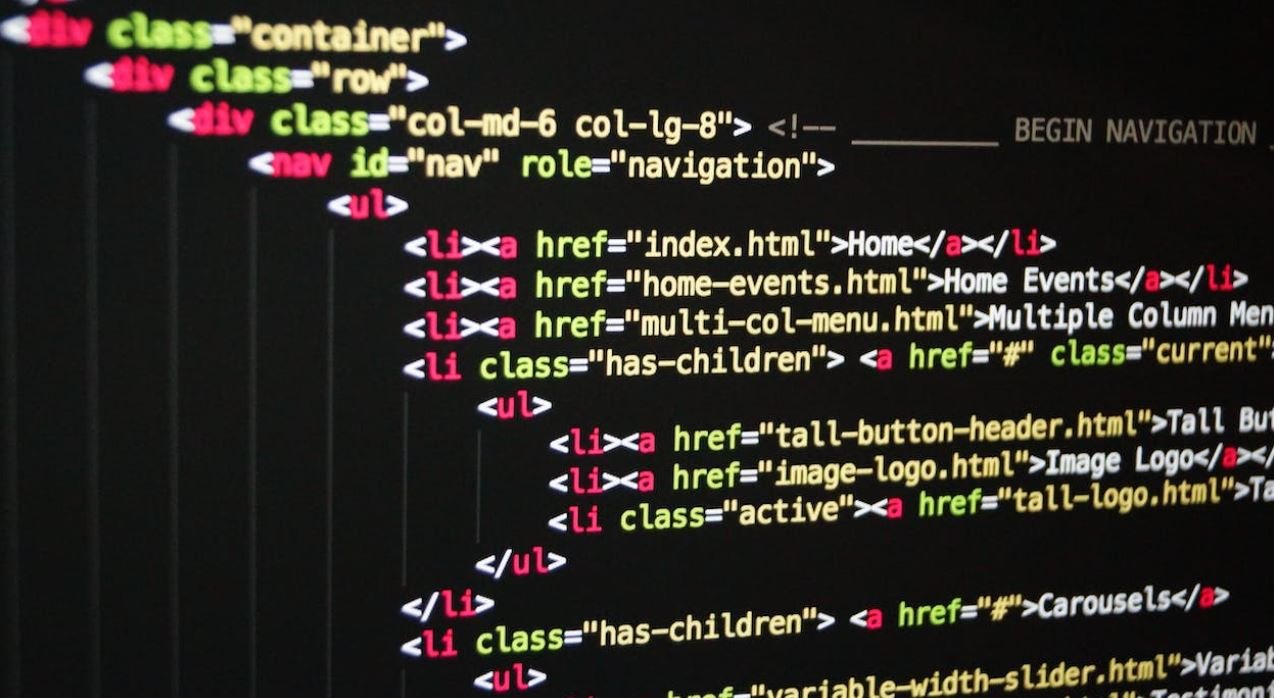OpenAI vs Microsoft: A Battle of Artificial Intelligence Giants
The field of artificial intelligence (AI) has seen tremendous advancements in recent years, with OpenAI and Microsoft emerging as two major players. Both companies have made significant contributions to the development of AI technologies and are actively engaged in cutting-edge research. This article explores the key differences and similarities between OpenAI and Microsoft in their journey to shape the future of AI.
Key Takeaways:
- OpenAI and Microsoft are leading companies in the field of artificial intelligence.
- Both companies are actively involved in AI research and development.
- OpenAI focuses on developing general-purpose AI models, while Microsoft specializes in various AI applications and services.
- OpenAI promotes open-source AI development, while Microsoft prioritizes commercialization.
- Collaborations between OpenAI and Microsoft have resulted in joint AI projects and initiatives.
**OpenAI**, founded in 2015, is a research organization dedicated to developing and promoting **general-purpose AI**. They aim to build artificial intelligence systems that are not only highly capable in specific domains but also possess a broad understanding and flexibility similar to human intelligence. *OpenAI’s GPT-3 model, which can generate incredibly realistic text based on given prompts, is a testament to their pursuit of general AI capabilities.*
**Microsoft**, a technology giant with decades of experience, has also made AI a focal point of its operations. However, Microsoft’s AI focus lies in **applications and services** that can enhance various industries and user experiences. From chatbots like Cortana to computer vision systems like Azure Cognitive Services, Microsoft aims to provide practical AI solutions across different sectors. *Under the hood, Microsoft is consistently working on sophisticated machine learning algorithms that power their AI-driven applications.*
Collaborations and Joint Initiatives
While OpenAI and Microsoft are distinct entities pursuing their AI goals, they also collaborate on various projects and initiatives. Together, they combine their expertise to push the boundaries of AI advancements. For instance, **OpenAI’s GPT-3 model** is deployed on Microsoft’s Azure cloud computing platform, enabling developers to leverage its capabilities through Microsoft’s infrastructure. This collaboration aids in faster adoption and integration of OpenAI’s technology.
On the other hand, Microsoft’s collaborations with OpenAI extend beyond providing infrastructure. In 2020, the two companies announced a new partnership aimed at **building safe and beneficial AI**. This partnership includes an investment of $1 billion from Microsoft to support OpenAI in its mission to ensure AGI (Artificial General Intelligence) benefits all of humanity.
Comparing OpenAI and Microsoft
While both OpenAI and Microsoft contribute to the AI field, there are notable differences in their approach and focus. Here’s a comparative overview of these two AI giants:
| Parameter | OpenAI | Microsoft |
|---|---|---|
| General-Purpose AI | ✓ | |
| AI Applications | ✓ | |
| Commercialization Focus | ✓ | |
| Open-Source Initiatives | ✓ |
OpenAI’s primary objective is to **develop general-purpose AI**, whereas Microsoft concentrates on leveraging AI technologies for specific applications and commercialization. While OpenAI promotes open-source AI research and development, Microsoft’s focus on commercialization drives their proprietary solutions.
Another notable difference lies in the scope of their AI models. OpenAI’s GPT models, such as GPT-3, are widely known for their ability to generate human-like text and perform various language-related tasks at an impressive scale. Microsoft, on the other hand, offers a diverse range of AI services, including computer vision, natural language processing, speech recognition, and more, catering to specific needs across industries.
AI Models and their Impact
The AI models developed by OpenAI and Microsoft have had a significant impact on the AI landscape. Let’s take a look at some of the renowned models with their respective applications:
| AI Model | Developer | Applications |
|---|---|---|
| GPT-3 | OpenAI |
|
| Azure Cognitive Services | Microsoft |
|
These AI models have revolutionized the way we interact with machines and have found applications in various domains, ranging from content creation to analyzing complex data.
Future Collaborations and Innovations
As AI continues to advance rapidly, both OpenAI and Microsoft are poised to collaborate further and drive innovations in the field. Their joint efforts will likely lead to advancements in general-purpose AI models, as well as AI services tailored for specific industries and applications.
*Exciting times lie ahead as these two AI giants combine their expertise, ultimately benefiting us all with groundbreaking AI solutions that enhance our lives in ways we may not even have imagined.*

Common Misconceptions
Misconception 1: OpenAI and Microsoft are direct competitors
There is a common misconception that OpenAI and Microsoft are direct competitors in the field of artificial intelligence. While it is true that both organizations are heavily involved in AI research and development, they have different goals and areas of focus.
- OpenAI aims to ensure that artificial general intelligence (AGI) benefits all of humanity.
- Microsoft, on the other hand, focuses on building and delivering a wide range of AI-powered products and services.
- Although they may collaborate on certain projects, OpenAI and Microsoft approach AI from different perspectives.
Misconception 2: OpenAI and Microsoft have the same level of influence in the AI industry
Another misconception is that OpenAI and Microsoft have equal influence in the AI industry. While both organizations are recognized leaders in the field, their influence and contributions differ.
- OpenAI has a strong presence in AI research and is known for pushing the boundaries of AI capabilities.
- Microsoft, as a technology giant, has a large user base and extensive resources to drive the adoption of AI technologies.
- While both organizations make significant contributions, their impact on the AI industry may vary based on their unique strengths and focuses.
Misconception 3: OpenAI and Microsoft have similar approaches to AI ethics
Some people assume that OpenAI and Microsoft have similar approaches to AI ethics due to their involvement in responsible AI development. However, their approaches may differ in certain aspects.
- OpenAI places a strong emphasis on long-term safety and seeks to create a global community to tackle AGI’s challenges collaboratively.
- Microsoft’s approach to AI ethics focuses on transparency, accountability, and fair use of AI technologies in its products and services.
- While both organizations prioritize ethical concerns in AI development, their specific strategies and priorities may vary.
Misconception 4: OpenAI and Microsoft have an equal level of accessibility to AI technologies
It is a misconception to assume that OpenAI and Microsoft provide the same level of accessibility to AI technologies. While both organizations offer AI-related tools and services, their accessibility and availability can differ.
- OpenAI provides access to its AI models and tools through platforms like GPT-3, fostering innovation and exploration.
- Microsoft offers a wide range of AI-powered services and tools through its Azure cloud platform, targeting developers and enterprises.
- While some AI technologies provided by both organizations may overlap, their accessibility and target audience may vary.
Misconception 5: OpenAI and Microsoft have identical visions for the future of AI
Lastly, it is important to recognize that OpenAI and Microsoft may have distinct visions for the future of AI, despite their shared interest and involvement in the field.
- OpenAI’s vision encompasses the development of AGI that benefits all of humanity, with a strong focus on long-term safety and responsible deployment.
- Microsoft envisions a future where AI augments human capabilities and improves productivity across various industries.
- While their visions may align in certain aspects, their specific goals and priorities for AI’s future can differ.

OpenAI Funding
OpenAI is well-known for receiving significant investment from various sources. As of 2021, the company has raised a remarkable $1.9 billion in funding. This substantial financial backing has allowed OpenAI to accelerate its research and development efforts in the field of artificial intelligence.
Microsoft Acquires OpenAI
In a landmark move, Microsoft acquired OpenAI in a deal worth $1 billion in 2020. This partnership between two powerhouses in the tech industry has led to collaboration on cutting-edge AI projects and has brought immense value to both companies. The acquisition has provided OpenAI with additional resources and support to further advance its AI technologies.
OpenAI Researchers
OpenAI boasts a diverse team of highly skilled researchers from around the world. With specialists in machine learning, natural language processing, robotics, and more, OpenAI’s research team is at the forefront of AI innovation. Their combined expertise and collaborative efforts have made significant contributions to the development of AI technologies.
Microsoft Research Team
Microsoft also boasts a formidable research team dedicated to expanding the boundaries of AI. With over 1,000 researchers globally, Microsoft has made substantial investments in AI research and development. This talented team is responsible for groundbreaking advancements in areas like computer vision, speech recognition, and reinforcement learning.
OpenAI’s AI-Powered Language Model
OpenAI’s most notable achievement is the development of GPT-3 (Generative Pre-trained Transformer 3), one of the most advanced AI-powered language models to date. GPT-3 is capable of understanding and generating human-like text, revolutionizing various industries such as content creation, customer support, and language translation.
Microsoft’s AI Enhancements
Microsoft’s commitment to AI is evident through its ongoing improvements across its product lineup. Spanning from Azure cognitive services to Office 365, Microsoft has integrated AI technologies in numerous applications. These enhancements allow users to benefit from smart features like automatic transcription, language translation, and advanced data analysis.
OpenAI’s Ethical Guidelines
OpenAI has pioneered ethical guidelines within the realm of AI research and development. These guidelines ensure that AI is developed responsibly and prioritizes the well-being of individuals and society at large. OpenAI firmly believes in democratically benefitting everyone from AI advancements while diligently avoiding any harmful or malicious use of the technology.
Microsoft’s Approach to AI Ethics
Microsoft is deeply committed to the responsible development and deployment of AI. The company upholds principles of fairness, reliability, privacy, and inclusivity in its AI systems. Microsoft’s AI ethics framework includes robust transparency and accountability measures to ensure that their AI technologies are trusted, safe, and beneficial for all users.
OpenAI’s Impact on Various Industries
OpenAI’s breakthrough AI technologies have garnered widespread attention across diverse industries. The healthcare sector benefits from AI-driven diagnostics and personalized treatment recommendations. In finance, OpenAI’s algorithms aid in risk assessment and fraud detection. Furthermore, AI-powered chatbots and virtual assistants have revolutionized customer service in sectors such as retail and hospitality.
Microsoft’s AI Applications
Microsoft’s comprehensive suite of AI applications spans across industries and sectors. In education, AI-powered tools enable personalized learning experiences. In manufacturing, AI-driven predictive maintenance enhances operational efficiency. Additionally, AI-driven precision agriculture optimizes crop yields and resource allocation. These applications demonstrate the immense potential AI holds for various fields.
Both OpenAI and Microsoft are influential players in the world of artificial intelligence, each contributing in their unique ways. OpenAI’s focus on advanced language models and ethical guidelines, combined with Microsoft’s holistic approach to AI across diverse areas, showcase their impact on industry innovation. With their collaborative efforts and groundbreaking developments, the advancements in AI technology are certain to shape the future in profound ways.




